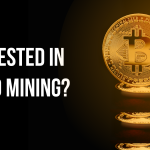Whether you’re new to the blockchain industry or an expert who has followed the crypto revolution since its early days, tokenomics is a key concept you must grasp to understand how crypto markets work and what makes different cryptocurrencies valuable.
In this article, I’ll tell you all you need to know in simple terms.
Table of Contents
What Does Tokenomics Mean?
Tokenomics is a combination of two words, “token” and “economics”. To understand it, you must first know what a token is and what economics is about.
Generally, a token is an asset that signifies value in a particular system. It is proof that you have done work or have contributed significantly to a project and, therefore, have a stake.
For example, gaming apps give XP (experience points) when you complete missions or some other tasks. Some give diamonds, gems or other precious materials. The more you play, complete missions, and unlock harder levels, the more you’re rewarded with XP or gems.
The gems are proof of your hard work in the game. When other players see how many gems or XPs you have, they can tell whether you’re a diehard fan or just a newbie passing by. These are all tokens – gems, XPs, diamonds, gold, or whatever form of reward you’re given for playing a game, using an app, or contributing to a platform.
Tokens in the blockchain industry and cryptocurrency space are no different. They serve the same purpose: to reward the people who contribute to a system/project and serve as proof of work done.
Economics, on the other hand, is the study of how goods/services are produced, distributed, and consumed. Therefore, tokenomics deals with how tokens are produced, distributed, and used.

tokenomics meme
Why Tokenomics is Important in Crypto
There are tokens everywhere, so what makes crypto tokenomics special?
First off, knowing how a token is produced, distributed, and used will help you assess its value. It will help you figure out whether it’s worth spending time, effort, and resources to acquire a particular token.
This is especially important in the cryptocurrency space where finances are involved. Aside from the time and effort put into a crypto project or platform, you might invest money. It is only wise to understand the economics of a token/cryptocurrency before investing in it and promoting it among your peers.
Secondly, as a founder/developer, understanding crypto tokenomics will help you create successful crypto projects by choosing the model that helps you achieve your aim.
Read also: 7 steps to become a blockchain developer
What Are the Benefits of Tokenomics?
A good grasp of any crypto’s tokenomics will help you
- Assess its value
- Decide whether it’s worth an investment
- Know factors that can raise or crash the value
- Identify flawed crypto projects
- Avoid scams
- Make intelligent suggestions on how to improve the system
How Does Crypto Tokenomics Work?
How a cryptocurrency/token is produced, distributed, and used is decided by the founder(s) before building the system. Then, developers implement it using code, ensuring that the rules are unchangeable, transparent, and predictable.
That means when a crypto project launches, the established tokenomics stands forever and is clear for everyone to see. Also, its value in different market conditions can be predicted.
There are 4 main models.
-
Proof of work (PoW)
PoW is the earliest and most common model. In this system, tokens are earned by completing a task. This can range from solving puzzles, inviting other users to the platform, or downloading an app.
Some PoW systems are highly competitive. Miners must solve complex mathematical puzzles to add new blocks to the blockchain before receiving a token. The first to solve the puzzle adds a new block and receives a token.
Here, two key differentiators are the complexity of work and the number of tokens received for work done.
-
Proof of stake (PoS)
In this model, validators stake (lock up) their coins/tokens for a chance to add a new block and receive a token as a reward. It’s like bidding for a project. Although there is an element of randomisation to ensure fairness and distribution of power, users with the highest stake are more likely to be chosen to validate a block and receive their reward in tokens.
If the block isn’t validated correctly, the validator who approved it loses some of his staked tokens as punishment.
-
Proof of burn (PoB)
The PoB model involves burning (destroying) coins to add blocks to the blockchain and receive tokens plus/minus other incentives. The idea here is to regulate the supply of tokens, thereby increasing its value.
-
Proof of authority (PoA)
Based on established protocols, a few people in a crypto network are chosen to act as validators. That is, the entire community acknowledges their authority and, therefore, entrusts them with the power to add new blocks to the blockchain, thereby receiving tokens.
Read also: A quick introduction to blockchain and cryptocurrency for Nigerians. Also, Subscribe to our Youtube channel for discussions on technology and career development.
How Do You Know if a Crypto’s Tokenomics is Good?
A key takeaway is that there is no perfect one. Every model has its pros and cons.
What matters is the aim of the founder(s) and core team and whether or not the chosen model works towards that aim. Tokenomics informs you of the risks involved in a particular crypto ecosystem and how the crypto/token is likely to perform in different market conditions.
Bitcoin, the first cryptocurrency, is often cited as having good tokenomics.
What Factors Affect Tokenomics?
The following factors are important in the production, distribution, and use of tokens.
-
Token supply
As with other goods and services, value and price are determined by demand and supply. You must know the maximum supply allowed, i.e., the total number of tokens that can be supplied in a particular crypto ecosystem. You can find this in the crypto’s whitepaper (see “where to find tokenomics of any crypto” below).
Some tokens, e.g., ether by the Ethereum network, don’t have a maximum supply.
Another aspect of supply to consider is the circulating supply. It is good to know how many tokens are in circulation. Thanks to the transparency of blockchain technology, every piece of information is accessible online. It only takes a few seconds of searching the whitepaper and other resources on the crypto’s website or a Google search like “How many X coins are in circulation?”
-
Token distribution
How is the token shared among core team members, investors, and community members? Was a humongous percentage already reserved for the core team and investors before taking the cryptocurrency public?
It’s good to watch out for cryptocurrencies that are held largely by only a few people, as they can easily influence the value or other important decisions for their personal gains. Also, the investors backing a cryptocurrency/token can affect its value.
-
Utility
Another important factor is the token’s use. What can you do with the token?
Various tokens have different utilities. Some can be used as currency and, therefore, act as a medium of exchange and store of value.
There are also governance tokens that can be used to make decisions about how the blockchain ecosystem should develop and if changes should be made to the protocol. Some tokens can be used only within a crypto project’s ecosystem. Some tokens act as securities and can be used for investing.
Generally, tokens with real-world utility are more valuable.
-
Incentives
These are rewards aside tokens that encourage users to participate in the system and expand the network.
One of the most common incentives is transaction fees.
A popular use case is Bitcoin. Even after all 21 million coins would’ve been mined, transaction fees will constitute good enough rewards for users, sustaining the blockchain network for a long time.
-
Token burns
Burning is simply the destruction of tokens.
The governing body of a decentralised autonomous organization (DAO), as determined by its stake in the ecosystem, may decide to burn some tokens, thereby reducing the supply.
Crypto projects are like other projects in the sense that as they grow, new decisions are made that can change its direction. This is why distribution is important, so every decision is a good reflection of the community’s best interest, not just the wish of a select few. It’s also why the crypto space is a high-risk, high-reward playing field.
Read also: Blockchain in Finance and Fintech companies in Nigeria
Where to Find Tokenomics of Any Crypto
Before any crypto project is launched, a whitepaper is published. This usually contains all the important details about the cryptocurrency/token, including its token economics. You can find the whitepaper on the crypto’s website, usually in the header or footer.

location of crypto whitepaper at website footer
Crypto whitepapers are not secret documents; therefore, it’s easy to find them. If it’s not on the website, a simple Google search will suffice. For example, searching “bitcoin whitepaper” on Google.
If you can’t find the cryptocurrency’s economics in its whitepaper, then look through other resources on the website or search on Google for “X tokenomics” (where X is the crypto in question).
Read also: 10 Best Cryptocurrencies to Invest in Today
Frequently Asked Questions about Tokenomics.
What is the difference between crypto economics and tokenomics?
Basically, they are the same. It is only used to differentiate between the economics of cryptocurrencies and tokens.
Is Bitcoin a token?
The difference between a cryptocurrency and a token is often unclear.
Here, Bitcoin, other coins, and tokens are all tokens.
“Technically, a bitcoin (1 BTC) is a token — a digital asset that represents ownership of value in a decentralized system. However, within the crypto industry tokens often mean any crypto asset besides Bitcoin and to a lesser extent, Ethereum. Tokens also usually have uses aside from money-like properties.” – Bitcoin.com
What are the key components of tokenomics?
The key aspects are token supply, token distribution, token utility, burn, and incentives.
How do you make tokenomics in crypto?
First, you must consider your aim for the crypto project and then decide how tokens will contribute towards that aim. Then, follow the steps below.
- State the use of the tokens
- Decide the total supply of tokens
- State how users can earn tokens (See models explained above)
- How will the tokens be distributed?
- Publish your white paper.
- Start developing your crypto ecosystem, ensuring your tokenomics is ingrained in the coding process.
Practically, it may be more complex, and other actors/stakeholders will be involved.
Conclusion
Tokenomics is fundamental to understanding cryptocurrencies and critical for the success of any crypto project. Anyone interested in the financial applications of blockchain technology should get a firm grasp of the concept.
Investors, marketers, developers, and community members of any crypto ecosystem can’t make a thriving cryptocurrency without solid tokenomics.
PS:- A Token of Appreciation.
As a token of appreciation for working hard to explain tokenomics in simple terms, please share this.
Have questions or contributions? Let us know in the comments. Follow us on Twitter for more updates on technological advancements.
Edited by Halimat Chisom.
About Author

-
Tari Yousuo is an SEO specialist and content writer, writing about Tech and IT, Cloud Computing, AI, and Marketing.
When he's not digging deep into tech and the digital world, you can find him absorbing the beauty of nature or playing with poetry.
Latest entries
 CareerApril 18, 2024The Impacts of AI and Automation on Different Careers in Nigeria
CareerApril 18, 2024The Impacts of AI and Automation on Different Careers in Nigeria
 TechnologyFebruary 7, 2024What are Computer Servers and What Do They Do?
TechnologyFebruary 7, 2024What are Computer Servers and What Do They Do? TechnologyDecember 10, 2023Cloud Mining In Cryptocurrency: A Beginner-Friendly Introduction
TechnologyDecember 10, 2023Cloud Mining In Cryptocurrency: A Beginner-Friendly Introduction

